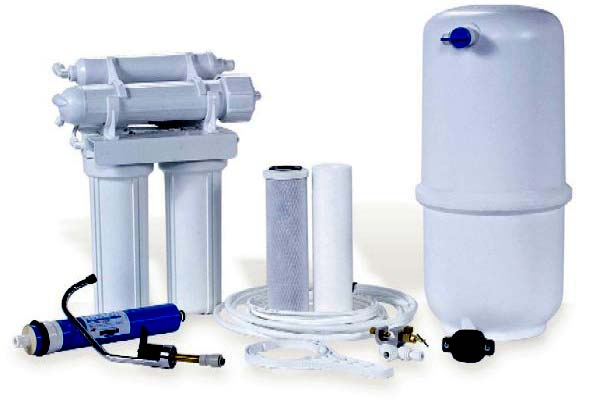The semi-permeable membrane used in reverse osmosis contains tiny pores through which water can flow. The small pores of this membrane are restrictive to such organic compounds as salt and other natural minerals, which generally have a larger molecular composition than water.
These pores are also restrictive to bacteria and disease-causing pathogens. Thus, reverse osmosis is incredibly effective at desalinating water and providing mineral-free water for use in photo or print shops. It is also effective at providing pathogen-free water. In areas not receiving municipally treated water or at particular risk of waterborne diseases, reverse osmosis is an ideal process of contaminant removal.
The reverse osmosis process contains several downsides which make it an inefficient and ineffective means of purifying drinking water. The small pores in the membrane block particles of large molecular structure like salt, but more dangerous chemicals like pesticides, herbicides, and chlorine are molecularly smaller than water (Binnie et al, 2002). These chemicals can freely pass through the porous membrane. For this reason, a carbon filter must be used as a complimentary measure to provide safe drinking water from the reverse osmosis process. Such chemicals are the major contaminants of drinking water after municipal treatment.
Another downside to reverse osmosis as a method of purifying drinking water is the removal of healthy, naturally occurring minerals in water. The membrane of a reverse osmosis system is impermeable to natural trace minerals. These minerals not only provide a good taste to water, but they also serve a vital function in the body’s system. Water, when stripped of these trace minerals, can actually be unhealthy for the body.
Reverse osmosis also wastes a large portion of the water that runs through its system. It generally wastes two to three gallons of water for every gallon of purified water it produces. Reverse osmosis is also an incredibly slow process when compared to other water treatment alternatives.
Source: http://www.historyofwaterfilters.com/
Dear User/Visitor! Please, answer on our questions: tick off one of the positions – your answer will make us able to improve our site and make it more interesting and useful!


